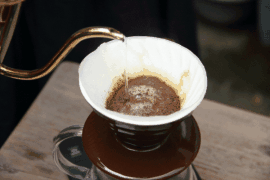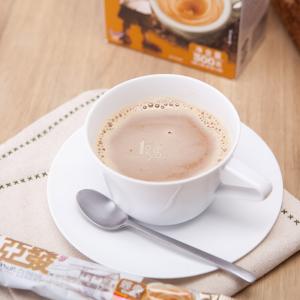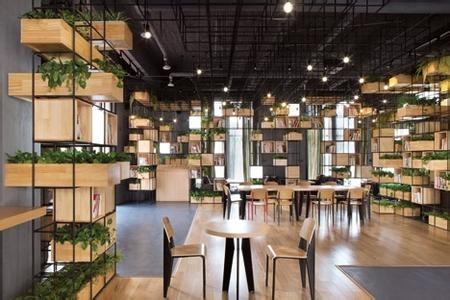Uganda Coffee Flavor description Taste characteristics Grinding scale Fine Coffee beans

Uganda Coffee Flavor Description Taste Characteristics Grind Scale Fine Coffee Bean Introduction
Uganda is one of Africa's leading coffee producers, accounting for more than 70% of its total exports, while Uganda is also the home and major producer of Robbs specialty coffee. In the 1960s Uganda's coffee production remained at 3.5 million bags per year. By the mid-1980s, largely for political reasons, coffee production had fallen to 2.5 million bags a year. But coffee production is picking up again and is now about 3 million bags a year. It is mainly exported to the European Union, of which Sweden, Italy and other countries are its largest coffee buyers. Uganda, located in eastern Africa, is a landlocked country across the equator. Uganda borders Sudan to the north, Kenya to the east, Lake Victoria to the southwest, Tanzania and Rwanda to the south, and Congo to the west.
The territory is located between the east and west branches of the Great Rift Valley in East Africa. It slopes gently from west to middle and is low and flat in the south. Margarita Peak is 5 109 meters above sea level, which is the highest peak in China. There are many rivers and lakes, and the water area is large, so Uganda has the name of "plateau water town" and "pearl of East Africa". Lake Victoria is the second largest freshwater lake in the world and the largest in Africa, covering 43 per cent of Uganda's territory. The White Nile, which flows from Lake Victoria, flows through most parts of the country. Its unique scenery includes tropical forests and tea trees on the snow-capped slopes of the Ruwenzori Mountains, arid plants of Karamoja, rolling savannas of Acholi, Bunyoro, Tororo and Ankole, and fertile cotton fields of Teso. Tropical climate. Because of the high terrain, most areas are warm all year round. The average annual rainfall is 1,000 mm. Agriculture is the main economic pillar of the country. Agriculture accounts for 90 per cent of the country's population. Crops are plantain, cassava, millet, sorghum, corn and so on
Mbale on Mount Elgon to the east and other producing areas near the border with the Democratic Republic of the Congo to the west are known as Wugar. Officially listed grades are Oaganic (organic), Bugisu AA, Bugisu A, Bugisu B, Bugisu PB, Wugar, Drugar and others not listed. To find good Ugandan coffee, you must first identify Bugisu AA, A and PB grades, but because the country is landlocked and has many transportation problems, you will often find green beans with low moisture content and no green appearance. However, Ugandan coffee is not a coffee type that emphasizes rising aroma. As long as the raw beans are not turned white or yellow, they can generally have good flavor performance in the producing area. They have a low ripe fruit aroma, such as the taste of red wine, and a thick body. They are similar to some Kenya beans with low flavor tone, but they will also have a mild soil flavor. Therefore, they are quite different from other producing countries in East Africa in flavor characteristics. It's a little bit like Asian Indonesian Sulawesi Tornaga coffee and Java Manor coffee. Baking degrees between City+ and Full City+ are all better.

Important Notice :
前街咖啡 FrontStreet Coffee has moved to new addredd:
FrontStreet Coffee Address: 315,Donghua East Road,GuangZhou
Tel:020 38364473
- Prev

Flavor description of Sidamo Gucci Coffee beans introduction to the production area of grinding scale taste treatment method
Flavor description of Sidamo Gucci Coffee beans introduction to the production area of grinding scale taste treatment method. When picking beans, only fully ripe crimson coffee cherries are picked. Before exposure, the beans will be screened for defects in the processing plant to make the beans look more average in size and maturity. two。 Next, use a tall wooden frame or a whole scaffolding to make the sun, so that the beans can be avoided.
- Next

Description of Flavor characteristics of Water-washed Rosa Coffee beans in Hartmann, Brazil
Flavor description of Brazilian Hartman washed Rosa Coffee beans taste treatment the present situation of coffee has been naturally favoured and has been cultivated in new places inland. Panama is famous for its new Brazilian coffee production after the war, and because of its natural conditions, it is still inferior in quality compared with that produced in Sao Paulo. Now in the northern state of Sao Paulo, Liebe
Related
- Detailed explanation of Jadeite planting Land in Panamanian Jadeite Manor introduction to the grading system of Jadeite competitive bidding, Red bid, Green bid and Rose Summer
- Story of Coffee planting in Brenka region of Costa Rica Stonehenge Manor anaerobic heavy honey treatment of flavor mouth
- What's on the barrel of Blue Mountain Coffee beans?
- Can American coffee also pull flowers? How to use hot American style to pull out a good-looking pattern?
- Can you make a cold extract with coffee beans? What is the right proportion for cold-extracted coffee formula?
- Indonesian PWN Gold Mandrine Coffee Origin Features Flavor How to Chong? Mandolin coffee is American.
- A brief introduction to the flavor characteristics of Brazilian yellow bourbon coffee beans
- What is the effect of different water quality on the flavor of cold-extracted coffee? What kind of water is best for brewing coffee?
- Why do you think of Rose Summer whenever you mention Panamanian coffee?
- Introduction to the characteristics of authentic blue mountain coffee bean producing areas? What is the CIB Coffee Authority in Jamaica?

